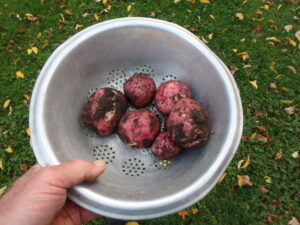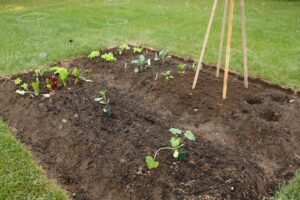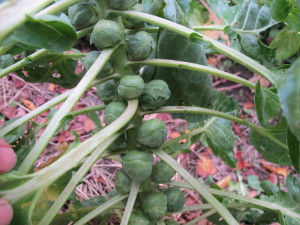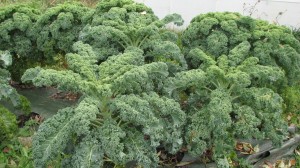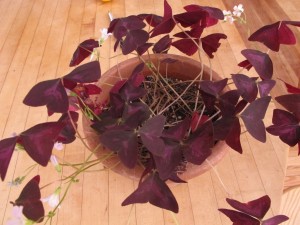Get Ready to Grow Vegetables This Summer
- All vegetables do best in full sun. The minimum amount of sun is 6 hours, though you can grow herbs and greens in 4 hours.
- Good soil is very important. Yes, heavy clay or sandy soil will produce some veggies, but improving it with compost will improve your results. Buy some, work it in.
- You shouldn’t use any chemicals. Not insecticides, not herbicides, not chemical fertilizers. The fertilizers can be replaced with compost and organic bagged fertilizers that are made with all natural ingredients and minerals. Your plants will do fine without chemicals, and will be healthier for you to eat.
- Adequate moisture is also key. Newly planted seeds or seedlings cannot dry out completely and survive. Later on, when mature tomatoes or beans have roots deep in your soil, they can endure a period of drought. But if they start to wilt, they are in trouble and need a soaking. Visit your garden every day to see how your plants are doing. Buy a hose long enough to reach the garden.
- Weeds are not your friends. They compete for water and soil nutrients, and if big enough, sunshine. For most small gardens, you can keep weeds under control in 10 minutes of weeding – if you do so every day. Mulching will help with both moisture levels and weed control.
What should you grow? If you’re worried about having enough food, grow potatoes. So long as you don’t have a swarm of potato beetles eating the leaves, or a blight (like the one that did in the Irish) potatoes are sure winners. They will provide calories better than anything else you can grow, and they store well. I’m still eating mine from 2019.
Next on my list of veggies to grow is kale. It produces a lot of greenery that can be added to any soup, stew or stir fry, adding vitamins A to Z. (Yes, I know, there is no vitamin Z). Unlike lettuce or spinach, kale freezes well. You can pack a lot of kale into a quart zipper bag and put it away for days you can’t to go the store. It’s great in a smoothie, too. I’ve never had a pest or disease on my kale.
Then there are the winter squash: Blue Hubbard and Waltham butternut will store well for many months – all winter, and into the next season. They can be stored on a shelf in the pantry, or cooked and frozen. Either way, they are nutritious, tasty, and very easy to grow. But they have long vines, and need space. Zucchini for summer eating are great, very productive, and take less space than winter squash.
So how do you actually prepare a garden for planting? Pick a spot in the middle of the lawn. Get rid of the grass in the plot: Use a shovel or a garden fork to dig it out. Shake the roots to save the soil from the roots. This is hard work. Plan on spending half an hour every day digging out sod until the job is done.
Cold Weather Crops
At this time of year I eat one of the “three B’s” from my garden every day: broccoli, Brussels sprouts or kale. All right, don’t get on my case. I know kale doesn’t start with a “B”. But it’s a brassica, the family that contains those other two, plus cabbage, rutabagas, cauliflower, kohlrabi and more. All are good cold weather crops.
In addition to surviving frosts, all the brassicas are healthy foods with lots of Vitamin C, soluble fiber and compounds thought to prevent cancer (though that is a little controversial). What you may not know is that boiling brassicas removes most of those cancer-fighting compounds, but steaming them or cooking them in a microwave dos not. Three to four minutes of steaming will cook your brassica nicely, but not steal many nutrients. But the best way to eat them is raw.
There are many varieties of broccoli, almost all are excellent. Arcadia is one that has done well for me, and is very cold hardy. I talked to my friend Chaz Meyers of Cornish Flat, N.H., who I think of as Mr. Broccoli. He and his wife, Jill Johnson, grow about 50 plants every year, freezing it and eating it all year. He told me that ‘Packman’ is favorite, in part because it produces lots of side shoots. He also likes ‘Waltham’ and ‘Gotham’ varieties.
Chaz recommends cutting the primary head of broccoli on an angle so that the stem, which is often a bit hollow, does not hold water (which might promote rot). He also suggests, if the summer is dry, watering your broccoli well after cutting the big head. That keeps the plant healthy and promotes the development of side shoots.
I once planted a little vegetable garden for a woman who didn’t know much about gardening. I planted two broccoli plants that produced magnificent heads in July. She ate them, with glee, and then pulled out the plants. Yikes! I regretfully explained that the most productive part of the plant are all those little “side shoots” that come after the main head. That, like the Energizer Bunny, broccoli keeps on producing for months. I’m still eating side shoots from plants I put in back in June.
Although broccoli are known for having little green caterpillars on them, mine have not had any this year – or none that I’ve seen. Maybe I’ve eaten a few. The best solution to the green caterpillar problem is just to soak the broccoli in cold water with a little salt in it before cooking. They will float up.
I dare say that my Brussels sprouts are perfect right now. Each is the diameter of a quarter- or a half dollar – and unbothered by any pests or diseases. I eat some every night for dinner: a dozen is just the right sized serving for me, so my six plant will keep me eating them for weeks. Brassicas are very hold hardy, and Brussels sprouts and kale will survive temperatures down to 20 degrees – or even colder. Frost helps to sweeten up their flavors.
Deer don’t bother my garden until it gets cold. Then they look for my Brussels sprouts and kale and broccoli. Once they waited until the night of December 24 to eat my Brussels sprouts, though that might have been the reindeer, waiting while Santa was inside the house. I recently took some preventive measures. I covered my kale with a scrap of chicken wire that I just draped over my plants, and then I surrounded the Brussels sprouts with some four-foot chicken wire. The broccoli will have to fend for itself – I’ve run out of fencing.
Kale is the perfect vegetable to freeze. Unlike spinach, it doesn’t get soggy when frozen. It keeps its character. I blanch it for a minute in boiling water. That kills the aging enzymes that would make it turn old and woody after just a few months in the freezer. When I take it out, I drop it into a sink full of cold water, spin it dry in my salad spinner, pat it dry with a tea towel, and put it in freezer bags. I suck out the air in the bags with a drinking straw. The straw goes into a zipper bag that is 99% closed, and I suck out the air. I snap the bag shut as I pull out the straw, and it’s ready to go in the freezer.
I know people that are gaga about kale chips, dried kale that is salty and crispy, the health-nut food to substitute for potato chips. I recently tried making my own but I’m neutral about them. Here’s what I did: I stripped the leaves off the central stem, and tore the leaves into pieces and put them in a big bowl. I coated them with a garlic and olive oil solution (I used 3 cloves garlic and a few tablespoons of oil). I sprinkled pepper flakes or nutritional yeast on the leaves and tossed some more. I added salt, but not a lot.
Then I put some kale chips in the oven at 150 degrees for 2 hours with the convection fan blowing, others in a food dehydrator at 135 degrees for 2.5 hrs. Maybe I needed to use more salt or oil, but I was aiming for a health food. And this tasted like something a little too healthy. Oh well. They’re crispy, but they’re definitely not as good as potato chips. Darn!
Eating the brassicas from my garden at this time of year is a wonderful way to transition to winter. I have food in the freezer from the summer, and root crops stored in the cellar. But it feels great to walk to the garden with a knife and cut something fresh for dinner.
Henry Homeyer is a gardening educator, speaker and writer. Reach him at henry.homeyer@comcast.net.
The Irish Gardener
My great-grandmother took the boat from Ireland to Boston in the latter part of the 1800’s. Dobbie, as we called her, got a job as a cook at Wellesley College. That was a bit ironic because she was, in my memory, a wonderful person but a horrible cook. She never made me anything that I can recall eating with pleasure. Even her boiled eggs – usually a favorite of mine- were runny and disgusting.
So, despite the fact that I am one quarter Irish, for a long time I never paid much attention to Irish food. Not so any more. With St Paddy’s day just around the corner, I will soon be cooking up a big pot of colcannon, one of the great comfort foods of all time. It’s a wonderful combination of potatoes and kale – foods that I still have from last summer’s garden.
As a gardener and a chef I appreciate the value of potatoes, especially potatoes from my own garden. Potatoes come in as many colors and flavors as tomatoes. I grow potatoes with flesh that is white, yellow, pink and purple. I store and save potatoes, and once I went about 20 years without buying a potato to eat or plant. I just started this year’s planting with last year’s potatoes and I stopped eating potatoes when I ran out – until the next crop came in.
But back to colcannon. It is a potato dish I always eat on St. Patrick’s Day. It is easy to make and tasty to eat. I generally use a white potato such as the Kennebec, which is also my most productive variety. One chunk of potato planted can yield up to 5 pounds of potatoes.! They grow big and are great for mashing. The other main vegetable in colcannon is kale, which I grow in quantity and freeze for winter use. I like a variety called Winterbor which is readily available by seed or as seedlings at your local garden center. Here’s how to make a nice Irish side dish:
Ingredients:
2-3lbs of white potatoes
5-6 Tablespoons butter
3 cups kale, fresh or frozen, chopped finely & lightly packed in a measuring cup
½ cup onion finely chopped, or 3 green onions (including the greens)
1 cup whole milk or light cream
Method:
- Peel and boil the potatoes until they will fall apart when poked with a fork.
Drain. - Sauté onions and kale in the butter in a heavy pot on medium heat for 3 to 5 minutes.
- Add potatoes, stir.
- Add the milk (or cream for sheer decadence) and mash well using an old fashioned potato masher, not an electric mixer.
- Add salt and pepper as desired.
But on with the Irish theme. The rest of the meal should be Guinness stew, but that’s not from my garden, so you’re on your own for that. But as a centerpiece on St Patrick’s Day there should be a plant that screams “Irish”. The shamrock? The true Irish shamrock is a type of clover (Trifolium dubium) that is very hard to grow indoors and is rarely available even from florists and nurseries. What you can grow as a house plant is a type of wood sorrel commonly called oxalis. It looks like the Hallmark version of a shamrock.
Oxalis is a nice house plant that comes in green and maroon-leafed varieties – though for St Patrick’s Day green is the proper selection. There are some 300 species of oxalis. Mine do well in a bright window – I have 2 of the maroon-leafed ones in bloom right now. In the summer they thrive on my somewhat shady deck. The light pink flowers are small and reach up above the leaves on thin stems. The leaves fold up at night time.
One of the great things about oxalis is that it is nearly impossible to kill by under-watering it. The leaves may shrivel up and die off, but if this happens, just give it a rest –which I have read it likes – and it will bounce back when you start watering it a few weeks later.
If you have an oxalis, you can divide it easily by separating the corms (the thickened roots) and planting pieces of them in new pots with fresh planting medium. Like most houseplants, oxalis does not do well if the roots stay constantly wet. I have planted mine in potting soil enriched with compost. I find a 50-50 mix is good. I have learned to judge dryness of the soil by lifting the pot. The surface may look dry, but if the pot is heavy there is still plenty of moisture down below.
Whether you have some Irish in you or not, grow potatoes and kale this year. Both are supremely easy. But it’s too cold to think about that now – except as ingredients in colcannon. Bon appétit!
Henry Homeyer is the author of 4 gardening books and a children’s fantasy-adventure about a boy and a cougar. His Web site is www.Gardening-guy.com.



